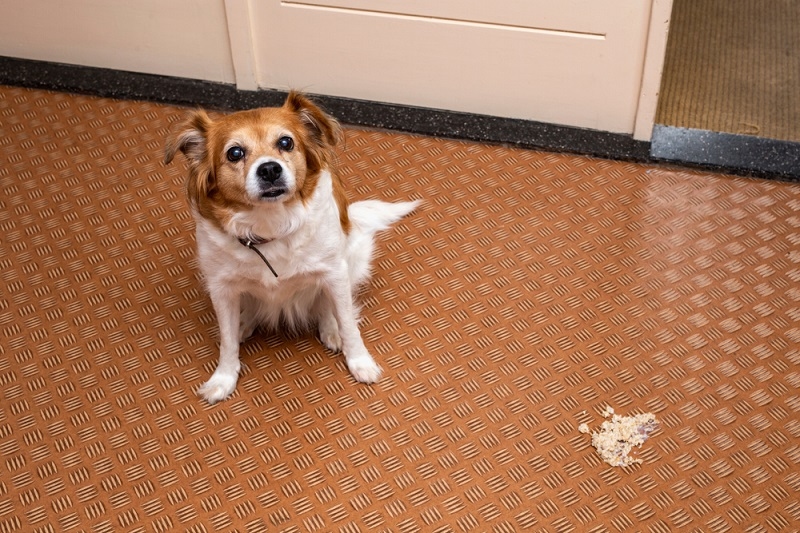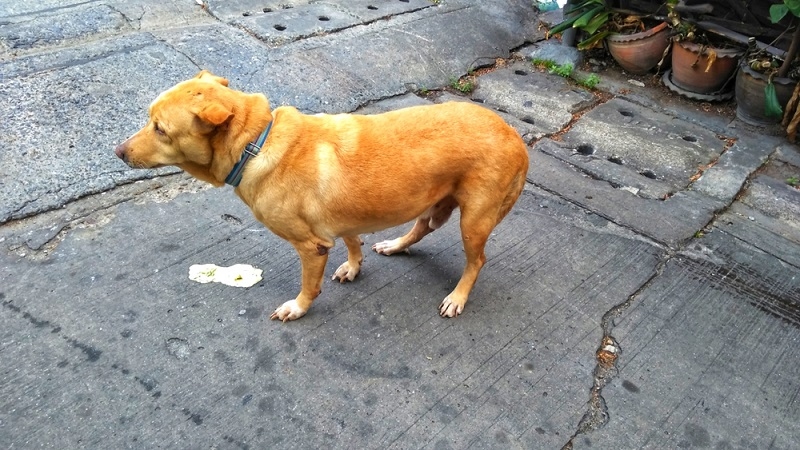
Dog regurgitation is a common issue that many owners notice when a dog brings up food without effort. This issue is different from vomiting because it can happen suddenly and without warning. Therefore, having the proper knowledge about this is essential for dog owners.
In this blog, you will learn what dog regurgitation is, the causes of dog regurgitation, dog regurgitation treatment, and regurgitation vs vomiting in dogs in detail.
Dog regurgitation happens when food or liquid comes back up from the esophagus without the dog trying to push it out. It often looks undigested and appears only a short time after eating. Many owners mix this up with vomiting, but both happen for different reasons.
With regurgitation, dogs do not show warning signs. There is no heaving, drooling, or tension in the body. The food simply returns without effort. This usually means that the issue is in the esophagus and not in the stomach. Understanding this small difference helps owners describe the problem in a clear way.
The food that comes out during regurgitation may look like a soft tube because it takes the shape of the esophagus. It may appear moist or covered in saliva. With vomiting, the food looks more broken down and may have a yellow tint from bile. These simple signs help owners see which one is happening.
Some dogs may only regurgitate once in a while after eating too fast. Others may show it often due to health issues. When it becomes more frequent, it is a sign to pay attention and check what might be going on inside the dog’s body.
Must Read: What are the Causes, Symptoms & Treatment for Dog Coughing?
Dogs bring up food for different reasons, and understanding the difference helps owners respond the right way. This simple breakdown explains how both actions work and what each one means for the dog.
Regurgitation is a quick and passive action where food comes back up without effort. The dog shows no warning signs, and the food looks almost the same as when it was eaten.
Vomiting is active and starts with signs like drooling, heaving, or discomfort. The food looks partly digested and may have a yellow tint from bile.
Regurgitated food is shaped like the esophagus and covered with saliva. Vomit looks broken down because it comes from the stomach and mixes with stomach contents.
Regurgitation happens quietly with no body movement. Vomiting involves strong muscle action as the stomach forces food upward.
These points help owners identify which action is happening and explain it clearly during a veterinary visit. Knowing the difference also supports faster diagnosis and better care.
There are several reasons why a dog may regurgitate, and most of them point to the esophagus. These points share the most common reasons in a clear and simple way.
Understanding the causes of dog regurgitation helps owners know when to take action.
A blockage can occur when a dog swallows something that is too large to move down. This may be a piece of bone, a toy, or any object that gets stuck. When this happens, food cannot travel to the stomach. It returns right away without effort, which looks like regurgitation.
Some dogs have weak muscles in the esophagus. When these muscles do not move food downward properly, it stays in the tube. A common example is a condition called megaesophagus. Here, the esophagus becomes wide and cannot push food forward. When food stays in place, it eventually comes back up.
When the esophagus is irritated, it may struggle to move food lower. This may happen due to acid moving upward from the stomach or from injury to the lining. When the surface becomes sensitive, food may not travel smoothly. As a result, regurgitation can happen more often.
These causes explain why regurgitation often connects to the esophagus. When episodes become frequent, checking for these reasons helps owners understand the next steps and manage the condition better.

Knowing whether food is coming from the esophagus or the stomach makes a big difference. These points explain simple signs that help owners identify regurgitation.
These signs help confirm what is happening and make communication with a veterinarian much easier.
Regurgitated food often looks like it did when it was eaten. It may be chewed but not digested. It usually comes out within minutes. This sudden return without warning is a strong sign that the food never reached the stomach.
Dogs do not show any muscle movement in the stomach before regurgitating. There is no heaving, coughing, or signs of discomfort. The food simply slips out. This lack of effort is a clear and simple way to identify regurgitation.
Food that comes out looking like a loose tube, covered with saliva, often indicates regurgitation. The shape matches the esophagus. There is no bile or digested look. This is another easy sign to spot at home.
These simple clues help owners tell regurgitation apart from other issues. Clear observation supports better care and makes the next steps easier to follow.
Top Pick: Learn About Behavior and Vet Visit Signs of Dog Panting
Dog regurgitation treatment depends on why it is happening. Some cases need help from a veterinarian, while others may be managed with daily adjustments at home.
These points share simple steps that support safe and comfortable eating for the dog.
Feeding a dog in an upright position can help food move downward more smoothly. Some owners use special feeding chairs, while others hold the dog up gently. Keeping the dog upright for a few minutes after eating may reduce episodes of regurgitation in many cases.
Some dogs manage food better when the meals are softer, thicker, or served in smaller portions. Adding warm water or broth can make the meal easier to swallow. Smaller meals also reduce pressure on the esophagus and support smoother movement.
Some dogs may need medicine to help the esophagus or stomach work more effectively. These medicines may reduce acid, support muscle movement, or protect the lining of the esophagus. A veterinarian can guide which option fits the dog’s condition best.
These simple treatment steps help many dogs experience fewer episodes. With consistent care and proper guidance, dogs may eat more safely and comfortably over time.
Dog regurgitation becomes easier to understand when owners know its signs and causes. With simple daily adjustments and proper veterinary guidance, many dogs can eat safely and live comfortably. Paying attention to patterns and seeking help when needed supports long-term health.
This content was created by AI